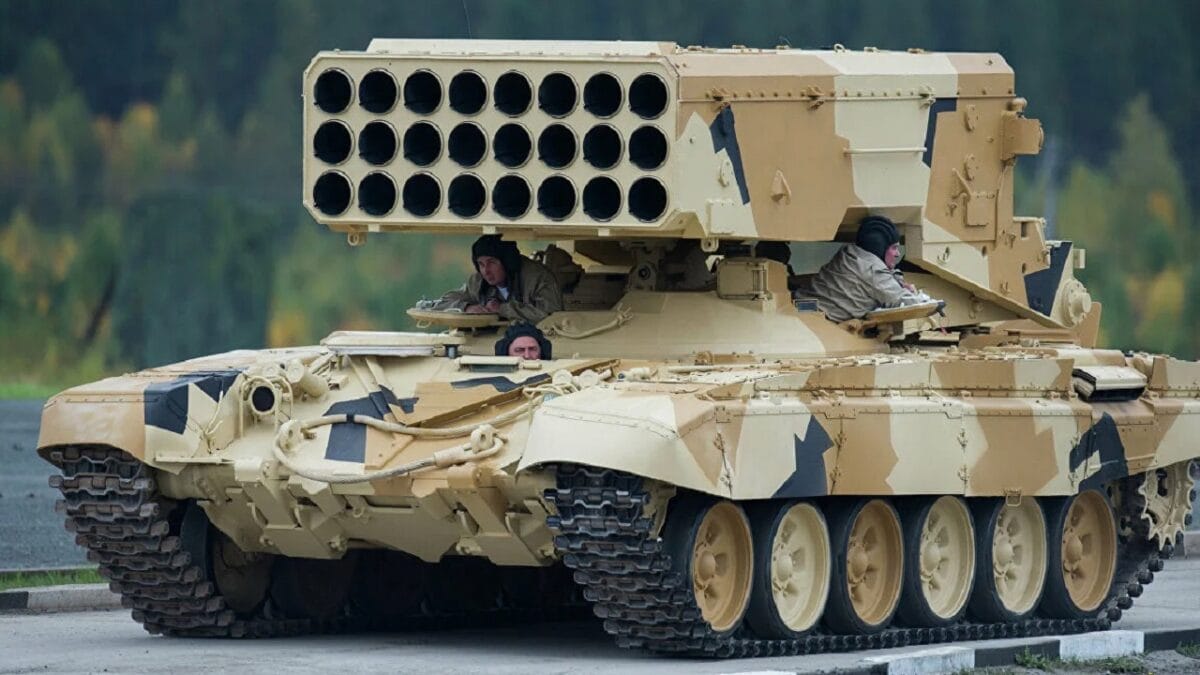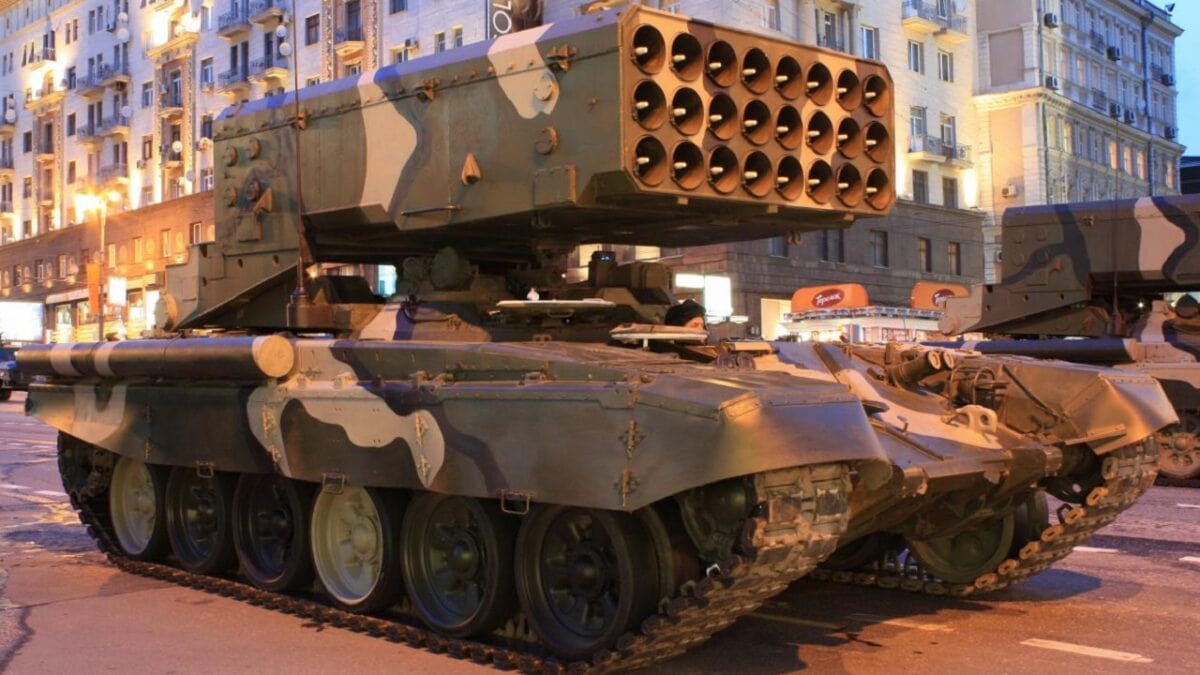The TOS-1 might just be Russia‘s most powerful weapon that doesn’t use nuclear weapons. We present a photo essay that shows the power and terror of these almost weapons of mass destruction.
The TOS-1 “Buratino” is one of the most frequently employed flamethrowing weapons in use today. A legacy Soviet system, the TOS-1 is the mainstay of Russia’s thermobaric artillery arsenal. It has seen significant use in conflicts across the former Soviet Union, including most recently in Russia’s invasion of Ukraine.
A Funny Name for a Deadly Weapon
While its Buratino moniker refers to a beloved Pinocchio-like character from Russian popular culture, this thermobaric multiple rocket launcher system is a serious instrument. Originally developed between 1977 and 1994 by the Russian company Omsktransmash (itself a subsidiary of the state-owned Uralvagonzavod), the Buratino consists of 30 missile tubes mounted on the chassis of a T-72A tank, which is also produced by Uralvagonzavod.
The TOS-1A, a newer version of the system, features 24 tubes and is known by the nickname Solntsepek, which means “spot of sunshine” in Russian. The newer TOS-2 system utilizes the same configuration as the TOS-1A, but its missile tubes are mounted on a Ural truck rather than a T-72 chassis. The TOS-2 was first used in the field as part of the Kavkaz 2020 exercise.
The acronym TOS stands for the tyazholaya ognemotnaya sistema, or “heavy flamethrower system” in English. As a word to describe the TOS-1 system, “flamethrower” is not wholly adequate. Instead, the missiles launched by a TOS-1 are built around a fuel-air explosive, or FAE. Unlike napalm, which sticks to its target as it burns, explosions derive from aerosolized chemicals that quickly spread and react to cause a long-lasting, powerful explosion that sucks the air out of the targeted area. This makes the TOS-1 lethal against enemy formations in all settings. Neither armor nor entrenchment can insulate the target from the effects of an FAE explosion.
The TOS-1 Is an Infamous Weapon
As a thermobaric weapon, the TOS-1 is designed to target the manpower of an opposing force in both open and confined spaces. In particular, the weapon acts as fire support for armored and infantry formations. Crewed by three servicemen, the TOS-1 has a minimum range of 400 meters and a maximum range of 6,000 meters (0.25 to 3.7 miles.) When firing normally, the system can cover up to 40,000 square meters in fire, a formidable weapon for use in clearing large areas with indirect fire. The TOS-1 is fully equipped with communications, observation, fire-fighting, and nuclear-biological-chemical protection systems.
The TOS-1 was one of the first weapons systems to enter Ukraine in February. Ben Wallace, the British minister of defense, accused Russia of using it early in the war. Russian forces appear to have lost several TOS-1s in combat, including some that were probably captured by Ukrainian forces. In addition to Russia, the TOS-1 is in the arsenals of the armed forces of Armenia, Azerbaijan, Iraq, and Kazakhstan. Saudi Arabia has reportedly purchased some TOS-1s as well.

Russian TOS-1A. Image Credit: Creative Commons.

Image: Creative Commons.

Image: Creative



While the TOS-1 is not the only thermobaric missile system in the world, it is certainly one of the most infamous. Given its wide proliferation and its chilling ability to wreak havoc on any type of armed formation, the TOS-1 Buratino and its derivatives will likely continue to see service in future conflicts.

Russian TOS-1 MLRS. Image Credit: Creative Commons.

Russian TOS-1 MLRS. Image Credit: Creative Commons.

Russian TOS-1. Image Credit: Creative Commons.

Russia’s TOS-1 Thermobaric MLRS.
Wesley Culp is a Research Fellow at the Center for the Study of the Presidency and Congress. He regularly writes on Russian and Eurasian leadership and national security topics and has been published in The Hill and the Diplomatic Courier. He can be found on Twitter @WesleyJCulp.

